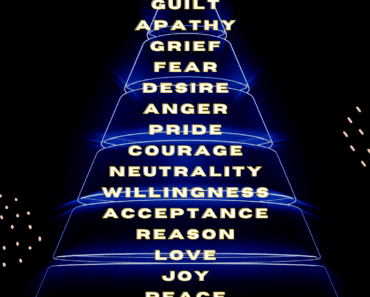Are you tired of being haunted by negative images and happenings that you see on social media or in real life? They aren’t going anywhere. If you are on social media or go out of your home, you will see negative things all the time. If these things are getting stuck in your mind and affecting your day in any way, it’s time to learn how to let go of these negative images and continue on with your day in a positive and upbeat mood. Here are 9 steps to take if you want to bounce back after seeing something bad.

1. Take a Deep Breath
When you see something that upsets or disturbs you, take a deep breath and focus on your breathing for a few moments.
Deep breathing is not simply a stress relief technique; it’s a powerful tool that helps reset your psychological and physiological responses.
When you encounter a disturbing image or experience, your body may involuntarily react with a stress response, releasing cortisol and quickening your heartbeat. Deep breathing is a form of biofeedback, allowing you to take control of these bodily responses.
By focusing on your breath, you distract your mind from the negative stimuli, helping you to regain your emotional balance.
Furthermore, deep breathing slows your heart rate and reduces cortisol levels, cultivating a sense of calmness and enabling you to move on with your day positively.
2. Acknowledge Your Feelings
Don’t get caught up in your emotions and let them dictate your reactions. Instead, simply acknowledge them.
It’s important to recognize and acknowledge your feelings when you see something that disturbs you. Trying to push them away or ignore them will only make the negative thoughts persist longer.
Instead, allow yourself to feel whatever emotions arise – anger, sadness, fear – without judgement.
Then acknowledge that emotions are natural and valid responses to external stimuli. But also acknowledge that you have a choice to change your emotions at any time. And that means right now.
3. Change The Scene In Your Mind
If what you saw was particularly disturbing to you, and you know that there’s a good chance it’s going to be hard to let go of what you saw, change the scene in your mind.
For instance, let’s say you see a fight on social media. In the video, someone gets kicked in the head and beat up while someone else laughs and says stupid things. This type of imagery and audio can stick in your head and cause you to relive what you saw and heard over and over again. There is nothing wrong with changing the imagery and sounds you heard. You may imagine that they were play fighting and they were all having a good time. Or you may want to turn the situation into a cartoon, where the images are exaggerated and the noises are quirky. The more you picture this new version of what you saw, the less likely you are to have negative emotions about it.
Obviously, you don’t want to rewrite everything in your mind this way. But when you see nasty videos and images, or people in real life doing bad things, there’s no point harping on it as it does you or them no good. It’s much better to change the scene so you can let go of the visual and audio and move on to the next step.
4. Shift Your Focus To Gratitude
When you encounter something that brings up negative emotions, it can be helpful to shift your focus onto things that make you feel grateful.
As soon as you take some deep breaths and acknowledge your emotions, take time to reflect on the positive aspects of your life – whether it’s your loved ones, a passion or hobby, or simply being alive.
Gratitude has an incredible power to shift our mindset from negative to positive. It acts as a psychological buffer, protecting us from harmful thoughts and emotions.
When we consciously choose to focus on what we’re thankful for, our brain releases dopamine and serotonin, two neurotransmitters responsible for our feelings of happiness and well-being. This not only brightens our mood but also decreases stress and anxiety.
Because our brains are wired to focus on one thought at a time, by immersing in feelings of gratitude, we naturally displace negative thoughts.
Additionally, the practice of gratitude fosters resilience, helping us to bounce back quickly from negative experiences and move forward with positivity.
5. Get Mindful
Stop focusing on what happened and bring yourself to the present moment.
Mindfulness is the practice of being present in the moment without judgment.
By being mindful, we can consciously choose how we want to be in the moment.
In other words, mindfulness also allows us to disconnect from negative thoughts and focus on the present, helping us let go of any lingering negativity.
6. Engage in Physical Activity
Exercise releases endorphins, our body’s natural painkillers, and mood boosters.
Regular physical activity can help reduce stress, anxiety, and depression – all of which can contribute to negative thoughts and emotions.
Engaging in a form of physical activity that you enjoy can help you release any pent-up negativity and replace it with positive energy. This could be anything from going for a walk or run, dancing, practicing yoga, dancing, or playing a sport.
7. Practice Self-Care
Taking care of your own needs, otherwise known as self-care, can be a powerful way to let go of negative images or experiences.
When you direct your attention to nurturing yourself, you’re essentially sending a positive message to your brain that you matter and that you’re deserving of care.
This can be anything from taking a relaxing bath, reading a book, cooking your favorite meal, meditating, or even just sitting quietly for a few minutes. By prioritizing your own well-being, you are training your mind to shift focus away from any negative stimuli and towards your own inherent worth and positivity.
If you happen to witness a disconcerting event while you’re out and about, an immediate self-care strategy could be to seek solace in nature.
A quick walk in a nearby park, or simply sitting on a bench under a tree, can help to calm your mind. The tranquillity of nature can act as a buffer against the harshness of the incident you witnessed, allowing your mind to refocus and regain a sense of peace.
The sounds of birds singing, the rustling of leaves, or the sight of a tranquil water body can provide a soothing backdrop that allows you to shed the negative emotions and replenish your mental energy.
8. Find a Creative Outlet
A creative outlet refers to an activity that allows you to express yourself artistically. This could include painting, writing, playing a musical instrument, dancing, or even gardening — any form of creative expression that resonates with you.
Engaging in a creative outlet can be incredibly beneficial when you encounter something negative, whether online or in real life. It provides an avenue for you to channel your emotions, helping you to process and make sense of what you’ve witnessed.
It’s a form of emotional release, allowing you to pour your feelings into something tangible and transforming them into a work of art, or a beautiful garden.
If you find yourself needing an immediate mood shift after encountering something negative, there are several creative outlets you can turn to that require minimal setup and can be started immediately.
- Journaling: Grab a notebook and pen, or open a new document on your digital device, and start writing about your feelings. Journaling offers a safe space for your thoughts and feelings, allowing you to vent and process what you’ve experienced.
- Sketching/Doodling: Even if you don’t consider yourself an artist, simple sketching or doodling can be a great stress reliever. All you need is a piece of paper and a pencil or pen. Create abstract patterns, draw a still life, or sketch a scene from your window. The act of drawing can help distract your mind and focus on the task at hand.
- Photography: If you have a smartphone, you can engage in photography to shift your attention. Snap pictures of interesting objects around you, or take a nature walk and capture the beauty of the outdoors.
- Crafting: Simple crafting activities like origami or knitting can also serve as effective mood shifters. The tactile nature of these activities can ground you in the present moment, helping you to move away from the negative incident.
- Music: If you play a musical instrument, losing yourself in a piece of music can be immensely therapeutic. If you don’t play an instrument, listening to uplifting music or singing along to your favorite songs can also have a positive impact on your mood.
Remember, the goal is not to create a masterpiece but to immerse yourself in an activity that diverts your attention, helping you to cope with, process, and move on from the negative experience.
9. Bombard Yourself With Positive Images and Affirmations
Engaging with positive images and affirmations can be a powerful and effective way to counteract negative experiences.
When you expose yourself to images that invoke happiness, tranquility, or inspiration, it stimulates positive emotions, guiding your thoughts away from the negative incident.
Similarly, affirmations are positive and powerful statements that help you challenge and overcome self-sabotaging and negative thoughts. When they’re repeated often and believe in, they can start to make positive changes in your mindset and improve your overall mood.
Despite all the negative things online, there is no shortage of positive things on there too. Find some cute videos, positive affirmations, or motivational quotes to focus on.





